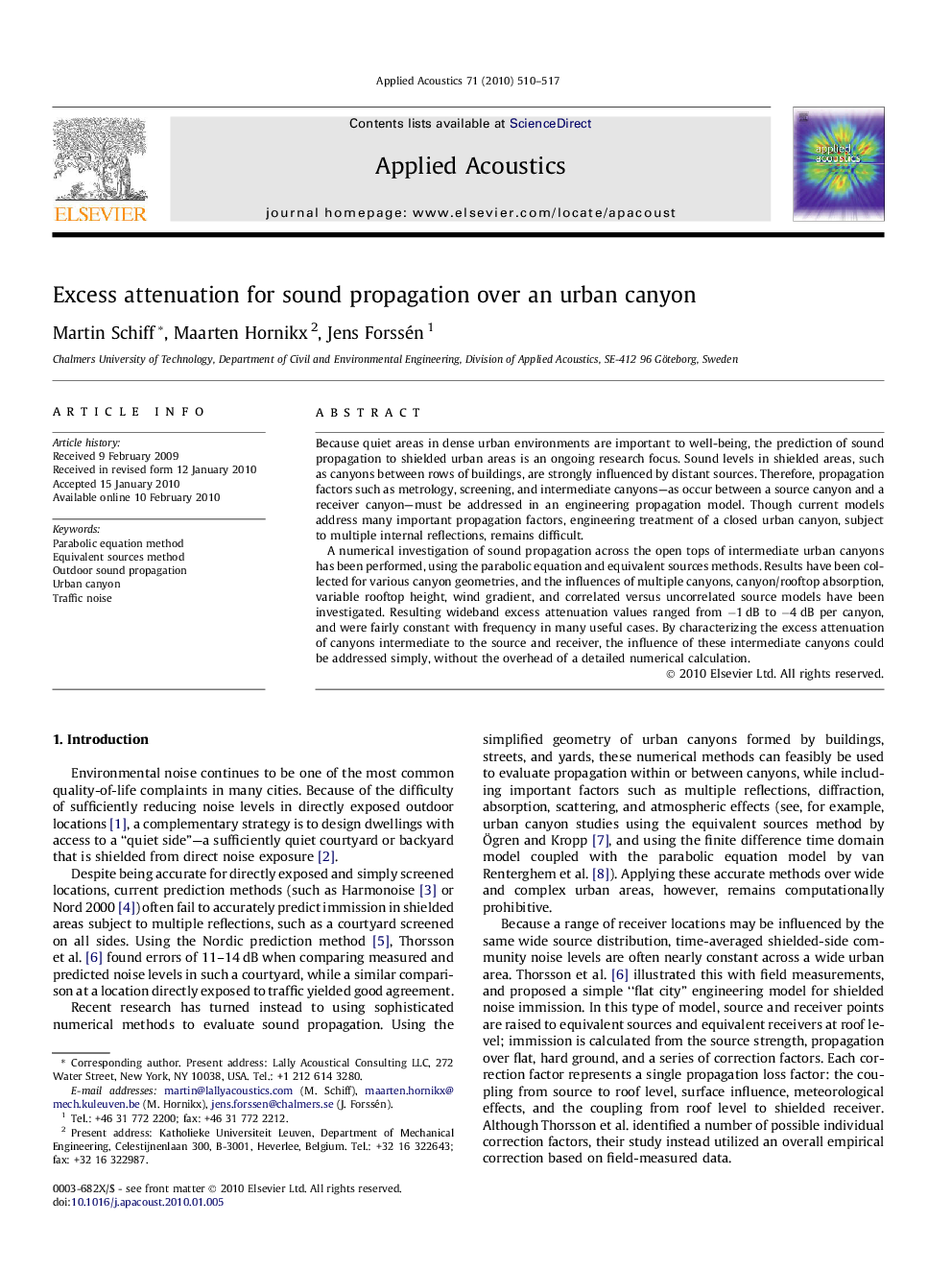| Article ID | Journal | Published Year | Pages | File Type |
|---|---|---|---|---|
| 753678 | Applied Acoustics | 2010 | 8 Pages |
Because quiet areas in dense urban environments are important to well-being, the prediction of sound propagation to shielded urban areas is an ongoing research focus. Sound levels in shielded areas, such as canyons between rows of buildings, are strongly influenced by distant sources. Therefore, propagation factors such as metrology, screening, and intermediate canyons—as occur between a source canyon and a receiver canyon—must be addressed in an engineering propagation model. Though current models address many important propagation factors, engineering treatment of a closed urban canyon, subject to multiple internal reflections, remains difficult.A numerical investigation of sound propagation across the open tops of intermediate urban canyons has been performed, using the parabolic equation and equivalent sources methods. Results have been collected for various canyon geometries, and the influences of multiple canyons, canyon/rooftop absorption, variable rooftop height, wind gradient, and correlated versus uncorrelated source models have been investigated. Resulting wideband excess attenuation values ranged from −1 dB to −4 dB per canyon, and were fairly constant with frequency in many useful cases. By characterizing the excess attenuation of canyons intermediate to the source and receiver, the influence of these intermediate canyons could be addressed simply, without the overhead of a detailed numerical calculation.
